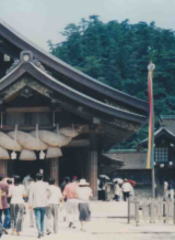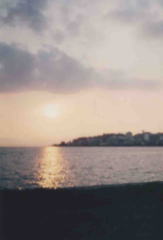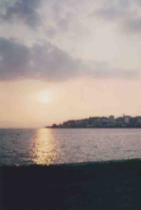Visit A Dental Office Japan has some information of your finest dentist in Japan
以下をご確認下さいクッキーについての同意並び欧州居住者向けプライバシーポリシー
Shimane Prefecture : The Short Summary Of Shimane-ken



Shimane Prefecture is situated in the western part of the main island of Japan so caled Honshu. The renge of Shimane prefectuer stretches widely from east to west, it is about 155 kilo meters long, and Oki Islands on the north shore in the Sea of Japan also belong to the prefecture, so the northern land of Shimane prefecture faces to the Sea of Japan and the southern land connects to the Chugoku Mountains range, then it is usually divided into 3 areas with classical provincial division, Izumo, Iwami and Oki. The land is blessed with abundant natural resources in both the Sea of Japan and the Chugoku mountains
The history of Shimane prefectuer is so vast and deep that the it first appeared in the Japanese mythology, Kojiki (Records Of Ancient Matters) and Nihonshoki (Chronicles Of Japan), especially Okuninushi, the king of Izumo, was drawn as the great hero in the first part of Kojiki, it implies that Izumo kingdom had exsited before Yamato Court united Japan as one country. And Izumo-no-kuni Fudoki, the regional gazetteers complied by order of the central government during the Nara period, is very famous, and it also tells a lot about the contributions of Okuninushi. Besides, there are various legends and folklores found everywhere in Shimane prefecture, and the culture and traditions related to those legends are still alive in the daily life of Shimane. Moreover, Shimane is famous for the place where myriads of Japanese gods gather to hold annual meetings to coupling young people. Thus, Shimane is known as "The land of the gods" or "The land of myths", and also Izumo Taisha Grand Shrine is called the god of marriage.
Shimane prefecture is composed of three classical provinces, Izumo, Iwami and Oki. But the history of Izumo is the mot famous that is in above paragraph. Ruins of Jomon and Yayoi periods are also abundant. In particular, the Kanba Kojindani Ruins in Hikawa Town in Izumo City having found 358 copper swords and the Kamo Iwakura Ruins in Unnan City having found 39 dotaku (bronze bell-shaped vessels) are famous and give the greatest impact to histrians thoughout the world since it have never excavated such many dotakus as anywhere in Japan. Now many archaeologhists, histrians, fans of history urge importance on Izumo and its contribution to the history of Japan.
Early 8th century, the famous poet Hitomaro Kakinomoto come to Iwami province to serve as governor, and he wrote many waka-style poems sang the praise of the beautiful scenery and women in Iwami.
Late Heian period to early Kamakura period, the political power in Japan had been transferred from the nobles in the Court to the samurai warriors in Kamakura. The retired Emperor Gotoba in 1221 and the Emperor Godaigo in 1332 had failed their attempts to topple the Shogunate and to be exiled to the Oki Islands. Since then, Oki Islands had been called "islands of exile", so there are some remains of the exile now in Oki Islands.
From Kamakura to Mid-Muromachi period (1192-1333), Sasaki Clan controlled the lands now in Shimane prefecture, and during most of Segoku period (the Warring States period) Amako Clan wielded power in Shimane, but in 1566 the region came under the domain of Mori Clan.
After the Battle of Sekigahara in 1600, Yoshiharu Horio got the position to rule Izumo and Ok province, and he built Matsuejo Castle and the foundation of Matsue city. In 1638, Naomasa Matsudaira succeeded the position of the Horio clan. However, Iwami was divided into two territories, Hamada and Tsuwano, and also the Iwami Silver Mine Estate was controlled directly by Tokugawa Shogunate.
After Meiji Restoration, the classical districts were rebuilt, Izumo merged with Iwami and Oki to be Shimane prefecture in 1871.
Now Shimane has 3 diffrent regions and many natural, traditional and cultural heritages in each regions.
Izumo Taisha Grand Shrine where the millions of gods throughout Japan gather in the 10th month of the lunar calender is located in eastern Shimane, Japanese tries to visit Izumo Taisha Grand Shrine to prey their happiness on time, they might believe it is the best time to prey. In eastern Shimane, there are more tourist destinations, the capital city of Shimane and the Castle town Matsue, the Adachi Museum of Art the 3 stars winner on the Michelin Guide and so on.
In the central prat in Shimane prefecture, there is the World Heritage Iwami Ginzan Silver Mine. The mine came to its peak early in the 17th century. At that time, Japan produced one third of the world’s silver production and the majority of the silver from Japan was from Iwami Ginzan Silver Mine. The mining town of Omori in Ota city is preserved in good condition so visitors would see the classical landscapes that give you amazing experiences that you may be in 18th century at the town. In addition, the guided tour of the mining tunnels is recommended.
In the western part Shimane, you will find breathtaking scenic beauty, such as a beach of singing sand and varied mountain landscape. In addition, the towns are very attractive, so Masuda city has many remains of Sesshu, the greatest painter and artist in Middle Ages in Japan, Tsuwano city, famous for the its white walls lining the main street, and so on tell you what Japanese beauty is.
The Oki islands area consists of about 180 large and small islands with a mesmerizing and dynamic landscape which goes far beyond your expectations. Oki has its unique history and culture.
Shimane's traditions and cultures developed for over thousands years are still existed in daily life. Kagura, a ritual performance, originally performing at shrines to appreciate the bless of the gods and nature, becomes popular now. Sada Shin Noh, a UNESCO intangible cultural heritage, a sacred dance performing at Sada Shrine in Matsue, is said to be the origin of Izumo style Kagura. Another UNESCO intangible heritage is Sekishu Banshi, tesuki washi or the handmade Japanese paper, skills and technologies to make have been handed down from generation to generation for hundreds years. Furthermore, Shimane is the only place where the traditional iron making technology called “Tatara”exists. Shimane is still the center of the production of high quality metal, known as tamahagane to produce Japanese swords.
Why don't you visit Shimane Prefecture!
参考
島根県ホームページ
島根県観光連盟ホームページ
デジタル大辞林
明鏡国語辞典
ブリタニカ国際大百科
クロニック戦国全史
日本大百科全書(ニッポニカ)
ウィッキペディア
Visit A Dental Office In SHIMANE

Kokoro Dental Clinic Masuda
Masuda CityVisit Areas In SHIMANE Prefecture
Shimane has many landmarks to visit, Izumo Taisha Grand Shrine in Izumo City, Lake Shijiko and Matsuejo Castle in Matsue City, Iwami Ginzan Silver Mining in Ota City and so on. Why don't you visit Shimane?


Areas
Landmarks and Events
- Iwami Ginzan Silver Mine and its cultural site (The World Heritage)
- Izumo Taisha Grand Shrine (The National Treasure)
- Matsuejo Castle (The National Treasure)
- Lake Shinjiko